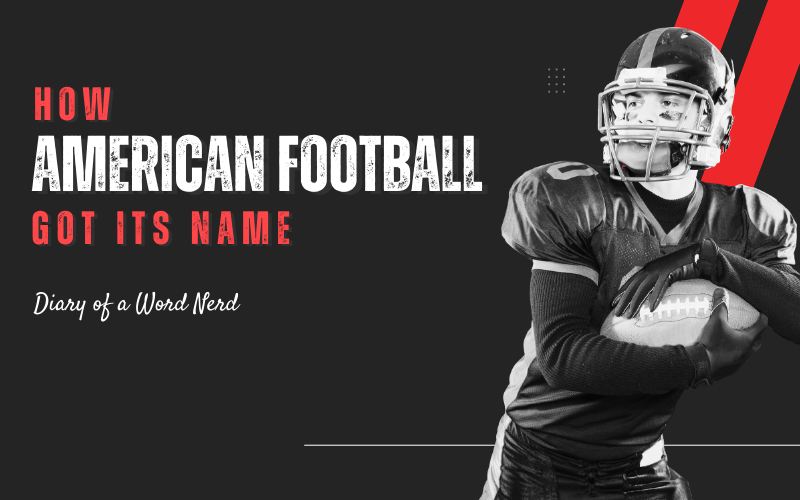We wonder things in my family. We wonder why a hamburger is called that when it doesn’t (usually) have any ham. We wonder why a soccer field is called a pitch. And, we wonder why football is called football since players use their hands to play. I spent the weekend with American football games blaring in the background, (My goodness, a lot of people were at that Tennessee game!), and now I must answer this question about the origin of the game “football.”
The origins of football
American football grew out of a group of games broadly called football that required teams to move a ball to a target using the feet. From that broad category, two games most often receive for the development of American football: soccer and rugby. Their names have an interesting history.
Soccer was originally called “association football.” Newspapers covering the sport shortened the name to “assoc.” In the 1870s, college men fond of playful slang, especially young men at Oxford, liked to shorten words and add “-er.” So breakfast became “brekker.” Assoc was shortened to soc and er was added, leading to soccer, which was first recorded as “socker” in 1891.
Rugby was another football game, but in 1821, a player named William Webb Ellis made a fundamental change to the sport. Instead of kicking the game ball over a goal line, he picked the ball up and ran over it. This significant play happened during a game at Rugby School, and thus the game of Rugby was born.
American football gets its start
Soccer and rugby came to the United States during the 19th century, and a hybrid of these two games morphed into what we now call football. The first football game played in the US was between Rutgers and Princeton in 1869. The match had few rules and was more chaotic than the highly technical game we watch now. In the 1880s, Walter Camp, known as “The Father of American Football,” introduced changes to make the game unique and also more safe.
Camp got rid of the chaotic scrum and added the line of scrimmage. He also added the concept of downs, which increased the strategic component of the game. Scoring methods changed under Camp’s direction, with different points awarded for a touchdown, field goal, or safety. This increased the need for planning and strategy.
Moving into the 1900s, players started wearing protective equipment, including helmets and pads. In 1906, the forward pass became a part of the game, in part to address continuing concern about player safety and the dangers of tackling. (Interesting to note that safety has been an issue from the start of the game.)
Close ties to rugby
American football has more in common with rugby than soccer. The games use similar strategy to advance a ball on a field and require robust tackles and physicality. The oblong shape of a football comes from rugby, as well as the basis of scoring.
As the daughter and granddaughter of avid Green Bay Packers fans, I understand football and most of its complicated rules, including the downs and the penalties. But over the years, I’ve developed a skepticism of the sport in general, particularly over concerns about its safety (after reading Concussion by Jeanne Marie Laskas) and a distaste for the aggressive and at times sexist and racist overtones of the sport. But I am glad to learn how it got its name and how it is different from soccer, my favorite sport. (Which also requires strategy and physical strength, without all the stoppage time and time outs. Just sayin’ 😉 )
For more details about the history of football and how it got its name, visit:
Who’s watching football this season?
Thanks for getting nerdy with me!




I enjoy watching football much less than watching other sports I deem faster-moving, but this history is fascinating, as well as the fact that safety has always been a concern. I wonder what happened for football to start worrying more about wearing protective gear while rugby players continue to tough it out sans helmet.